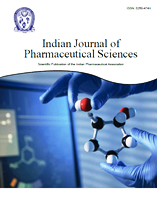Abstract
Effect of Momordica charantia on Insulin Immune-reactive Pancreatic Beta Cells and Blood Glucose Levels in Streptozotocin-induced Diabetic Rats
Department of Anatomy, 1Department of Pathology, College of Veterinary Medicine, King Faisal University, Al-Ahsa 31982, Saudi Arabia
Correspondence Address:
M. S. Moqbel, Department of Anatomy, 1Department of Pathology, College of Veterinary Medicine, King Faisal University, Al-Ahsa 31982, Saudi Arabia, E-mail: m.s.moqbel@hotmail.com
The present study was conducted to determine the antidiabetic effect of Momordica charantia on pancreatic islets of Langerhans in streptozotocin-induced diabetic male Wistar rats in relation to the distribution of insulin immuno-positive beta cells. Momordica charantia was fed to rats at 2 %, 5 % and 10 % of the standard diet for 12 w. After sacrifice, the pancreatic tissues were obtained for histopathological and immunohistochemical observations. In addition, monitoring of fasting blood glucose was applied each month during experimental period. The results revealed that the oral doses of Momordica charantia at 5 % and 10 % of the daily diet increased the percentage of insulin-positive pancreatic beta cells as well as the size and number of pancreatic islets. Moreover, significant (p≤0.01) dose and time-dependent reduction in fasting blood glucose levels were observed. In conclusion, these results suggest that Momordica charantia induces antidiabetic effects via regeneration of insulin-positive pancreatic beta cells and increase the number of insulin secretory granules; hence, blood glucose reduction.




